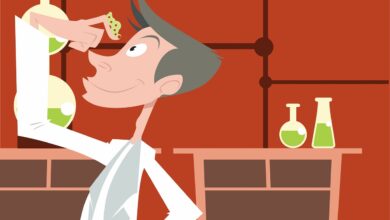Beyond Dolly: Understanding the Science of Cloning

This week, the world of celebrity pets got a dose of high-tech drama. You might have seen the headlines: Tom Brady, the legendary NFL quarterback, revealed that his beloved dog, Junie, is actually a clone. Not just any clone, mind you, but a genetic twin of his late pit bull mix, Lua, who passed away in 2023. It’s a story that instantly conjures images of other famous pet parents – think Paris Hilton with her cloned pups or Barbra Streisand, who famously had her Coton de Tulear, Samantha, cloned not once, but twice.
For many, this news is the first time they’ve considered pet cloning as a real-world possibility, let alone a celebrity trend. It sounds like something straight out of a sci-fi movie, a fantastical luxury reserved for the super-rich. And let’s be honest, it raises a few eyebrows, doesn’t it? The immediate reaction often leans towards, “Is this really necessary?” or “Surely there are better ways to spend $50,000?”
But here’s the thing about groundbreaking technology: it rarely stays confined to its most headline-grabbing applications. While the pampered pooches of the rich and famous certainly grab attention, the science behind cloning is being leveraged in ways that are far less trivial, and arguably, far more profound. Beyond the glossy pages of celebrity magazines, cloning technologies are quietly working to diversify the genetic pools of dangerously inbred species and even offering a glimmer of hope for bringing other animals back from the very brink of extinction. So, let’s pull back the curtain and explore the fascinating, complex world of animal cloning – a world where the stakes are often much higher than replicating a beloved family pet.
Beyond Dolly: Understanding the Science of Cloning
Cloning isn’t a new kid on the scientific block. Most of us first heard about it in the 1990s with the birth of Dolly the sheep, the first mammal ever cloned from an adult cell. Her existence shattered previous notions of what was possible, opening up a Pandora’s Box of ethical debates and scientific exploration. Since then, the technology has quietly evolved, finding practical applications in areas like livestock breeding.
Think about it: if you have a prize-winning bull known for its enormous size, or a dairy cow with an exceptionally high milk yield, these animals are incredibly valuable to farmers. Traditionally, you might try selective breeding to pass on those desired characteristics. But cloning offers a more direct route – creating genetic twins. It’s like having a backup copy of your most valuable genetic assets.
So, how does it actually work? It starts by taking a few cells from the animal you want to clone. These cells can then be frozen and stored indefinitely in a biobank, essentially pressing pause on their genetic material. When the time comes for cloning, these cells are thawed. Scientists then carefully remove the DNA-containing nucleus from one of these cells. This nucleus, containing all the genetic instructions for the original animal, is then inserted into a donor egg cell. Crucially, this donor egg cell, taken from another animal of the same species, has had its own nucleus removed, making way for the new DNA.
It’s a delicate swap, essentially replacing the egg’s original genetic blueprint with that of the animal to be cloned. The resulting cell is then stimulated – often with a tiny electrical pulse – to kickstart cell division. Once it begins to grow and resemble an early embryo, it’s transferred to the uterus of a surrogate mother animal. If all goes well, the surrogate carries the pregnancy to term, eventually giving birth to a clone – a genetic mirror image of the original animal.
The Commercial Side of Cloning
This sophisticated process has, predictably, led to a handful of companies specializing in the field. Viagen, a prominent player, boasts that it has “cloned more animals than anyone else on Earth.” They’re the company behind Barbra Streisand’s cloned dogs and offer their services to dog and cat owners for a hefty sum – around $50,000. Interestingly, Viagen was recently acquired by Colossal Biosciences, a company making waves with its ambitious “de-extinction” projects, including claims of resurrecting the dire wolf and creating a “woolly mouse” as a precursor to bringing back the woolly mammoth. While the ownership might have changed hands, Viagen continues its operations under its existing leadership, merging the niche world of pet cloning with the grander, more speculative vision of de-extinction.
The Nuance of Replication: Why a Clone Isn’t an Identical Twin
Despite the scientific marvel, pet cloning isn’t without its controversies, and not just from an ethical standpoint. Companies like Viagen are upfront about one crucial detail: while a cloned animal will be a genetic twin of the original, it won’t be an exact replica. Anyone hoping for a carbon copy, a perfect reincarnation of their departed companion, is likely to be disappointed.
One reason for this slight divergence lies in mitochondrial DNA. This tiny fraction of genetic material, located outside the cell’s nucleus, is inherited solely from the mother. When the nucleus of the original animal is inserted into a donor egg cell, the cloned animal may inherit some mitochondrial DNA from the surrogate mother. While this usually has minimal impact on the animal’s physical characteristics or health, it means it’s not a 100% identical genetic match.
More importantly, though, are the myriad factors that shape an individual’s personality and temperament. “It’s the old nature-versus-nurture question,” explains Samantha Wisely, a conservation geneticist at the University of Florida. Just think about human identical twins. They share the same DNA, but they are never truly carbon copies of each other. Their experiences, their environments, and even subtle epigenetic factors all contribute to making them unique individuals. A cloned pet will have its own life experiences, its own unique environment, and will undoubtedly develop its own distinct personality. Expecting an exact behavioral match is like expecting two separate lives to play out identically.
And then there are the ethical concerns. Animal welfare groups often voice strong opposition to pet cloning. PETA, for instance, has decried the practice as a “horror show,” while the UK’s Royal Society for the Prevention of Cruelty to Animals (RSPCA) argues that “there is no justification for cloning animals for such trivial purposes.” These organizations highlight the potential suffering of the donor animals and surrogates, as well as the deeper philosophical question of whether we should be playing God with animal lives for purely sentimental reasons, especially when so many animals in shelters desperately need homes.
A Lifeline for Species: Cloning in Conservation
While the ethical debates around pet cloning continue to swirl, there’s another side to this technology, one that many argue is far less trivial and critically important: its application in conservation. Here, cloning isn’t about satisfying personal grief or curiosity; it’s about safeguarding biodiversity and pulling species back from the brink of extinction.
Samantha Wisely, who spoke about the nature-versus-nurture debate in pets, has dedicated her research to using cloning for conservation, specifically focusing on the critically endangered black-footed ferret. The story of these ferrets is a stark reminder of humanity’s impact on nature. Today, approximately 10,000 black-footed ferrets exist, but here’s the shocking truth: they are all descended from just seven individuals. That’s an astonishing level of inbreeding, and it spells disaster for any species. Inbred populations are notoriously vulnerable; they suffer from poor health, have reduced reproductive success, and struggle to adapt to changes in their environment, making them highly susceptible to disease or sudden ecological shifts.
Wisely and her team saw an opportunity in frozen tissue samples from two other ferrets, individuals that had lived decades ago and were not part of the ‘founding seven’ lineage. Working with the non-profit Revive and Restore, the team successfully created clones of these two genetically distinct individuals. The first, named Elizabeth Ann, was born in 2020 – a significant milestone. Since then, more clones have followed. The crucial next step, already underway, involves breeding these cloned animals with the descendants of the original seven ferrets. The goal? To reintroduce much-needed genetic diversity into the population, making the species more robust and resilient against future threats.
This groundbreaking approach isn’t limited to ferrets. The endangered Przewalski’s horse, once extinct in the wild, has also benefited from similar cloning efforts, using tissue samples stored for decades by the San Diego Zoo. While it’s too early to declare these efforts a definitive success – researchers are still meticulously evaluating the cloned animals and their offspring to ensure they behave naturally and can thrive in the wild – the potential impact is immense.
Addressing the Critics in Conservation
Even in conservation, cloning isn’t without its detractors. Some critics point out that cloning alone is a band-aid solution; it doesn’t address the root causes of endangerment, such as habitat loss, climate change, or human-wildlife conflict. If the environment that led to a species’ decline hasn’t improved, simply creating more of them might not be enough. And, of course, the “playing God” accusation always looms large when discussing such profound biotechnological interventions.
Despite her significant involvement in cloning endangered ferrets, Wisely herself shared a rather poignant personal perspective. She wouldn’t consider cloning her own pets. She currently shares her home with three rescue dogs, a rescue cat, and a flock of “geriatric chickens.” “I love them all dearly,” she says, but her reasoning is simple and powerful: “there are a lot of rescue animals out there that need homes.” It’s a sentiment that beautifully encapsulates the complex ethical landscape of cloning – a powerful tool with the potential for both profound good and profound ethical dilemmas, depending on how and why we choose to wield it.
The Future of Replication: A Balancing Act
So, what does the cloning saga of Tom Brady’s dog, Junie, really tell us? It highlights how a technology often seen in the realm of science fiction has become a very real, albeit expensive, option for pet owners. But more importantly, it serves as a fascinating entry point into a much broader conversation about the future of biotechnology. While replicating a beloved pet might capture the headlines, the true potential of cloning technology lies in its ability to address some of the most pressing challenges facing our planet, from boosting genetic diversity in endangered species to potentially bringing back creatures long lost to history.
The journey from Dolly the sheep to Elizabeth Ann the ferret has been remarkable, demonstrating how far scientific innovation can take us. Yet, as with all powerful technologies, cloning demands careful consideration, ethical debate, and a keen understanding of its limitations. It forces us to confront questions of life, loss, and our responsibility to the natural world. Ultimately, whether it’s for a cherished companion or a critically endangered species, the act of cloning is not just about making a copy; it’s about navigating the intricate balance between human desire, scientific capability, and the profound implications of playing a more active role in the grand tapestry of life.





